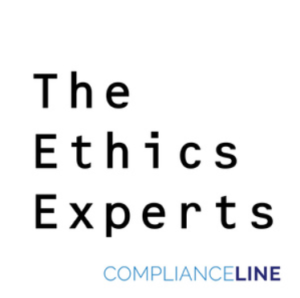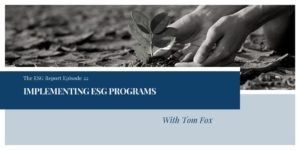Welcome to a special five-part blog post series on how to unlock the gold in your program. I visit with Gio Gallo and Nick Gallo, Co-CEO’s of ComplianceLine, LLC, the sponsor of this series. There is also a podcast on this topic and the link is listed below.
One of the ongoing issues in compliance is to demonstrate the Return on Investment (ROI) in your compliance program. One way to do so is by demonstrating the extended value of compliance literally across your entire company. When overlaid with an ESG component, you can begin to see the gold in your compliance hills. In addition to showing how you can unlock the gold in your own compliance hills, Gio and Nick discussed demonstrating ROI for your internal budgeting process which can provide to you the financial resource to strengthen and improve your compliance program. We begin Part 1 by considering how compliance can be seen as a corporate ROI multiplier by looking at the impact of compliance across your entire organization.
One of the most ubiquitous issues in compliance is making a case for ROI. Every compliance professional must be able to be able to justify not only their spending but their budgeting requests. However, as Gio believes, compliance professionals are “literally leaving some money on the table because there’s a lot more to this game than meets the eye.” It is important to understand not simply the numbers but also who you are talking to about ROI or budgetary requests. Also is the zero-mindset which is usually brought to the budgetary process. Many corporate officers feel that if their department does not receive funding those dollars go to another department, and vice-versa.
Gio emphasized that budgeting “is not a zero-sum game. If you can understand that being aligned with other departments, having some positive externalities that help someone else get their job done, or take some work from someone else’s plate, these are all things that you can align with this full company view.” Moreover, this allows you to portray you are not simply competing for dollars but putting in a richer attempt to serve the overall company mission. He emphasized it really takes a “broadening of your mindset not simply thinking about risk in the full company, but also thinking about the compliance budget as part of the whole.”
Nick added that many Chief Compliance Officers (CCOs) who come from a legally trained professional backgrounds handle budgets “like they are running a nonprofit, by minimizing spending, as opposed to like an abundance or growth mentality.” A CCO really does need to use a different set of frameworks when it comes to thinking through compliance ROI and budgeting, “fundamentally different than the binary sort of risk aversion frameworks that you’ll apply to managing an ethics and compliance department or building an FCPA policy or the like.” He concluded that it is all about taking a calculated risk.
Nick acknowledged that this might require making some assumptions, but it is also about doing some of the same things a compliance professional must do each and every day. We talked through the example of hotlines. Here you begin with a mandatory requirement for US public company for a hotline in Sarbanes-Oxley (SOX) all the way through a best practices compliance program, formulated by the Department of Justice (DOJ) in its most recent Update to the Evaluation of Corporate Compliance Programs. From the installation of the hotlines, all the way through the benefits of a speak up culture, a CCO should begin to show and build a picture that can be taken to senior management or the Board to represent the benefits internally and the types of ROI.
Nick noted this is “the exact arithmetic that we want to utilize. If you have a strong culture that people are engaged with their purpose is resonant with the organizational purpose. This means people expend more discretionary effort which falls directly to the bottom line. Moreover, if you love your work and you feel like your voice matters, and you’ve worked other places where your voice doesn’t matter, then you’re going to feel a particular allegiance to that organization. You’re going to appreciate that. Turnover is going to drop a little bit. All of those benefits will go directly to directly to the bottom line.”
But the conversation does not end there. Gio said, “part of this is a persuasion path, pointing to those outcomes, based on these inputs, which are a hotline or an improved case management system. Those are in my mind, extremely credible, especially when you can start to bring the finance people who are controlling purse strings into that calculation. And that’s what the basis of a lot of our ROI coaching has been not only getting those assumptions dialed in, but also building the persuasion path around the delivery of that message so that it lands in a way that is resonant with the you want to loosen those purse strings up.”
The bottom line is that as compliance leaders, we are “great at communicating the clarity that we have standing in and CCOs are also very good at dealing with the gray areas in the domain of risk management.” If, as the compliance professional, you can demonstrate the compliance function will “move the needle, from a risk management standpoint to not simply rectify the causes of those faster” but make the company run more efficiently, you can make a good case for increased budgeting and greater resources for your compliance program.
Check out the full podcast here.







